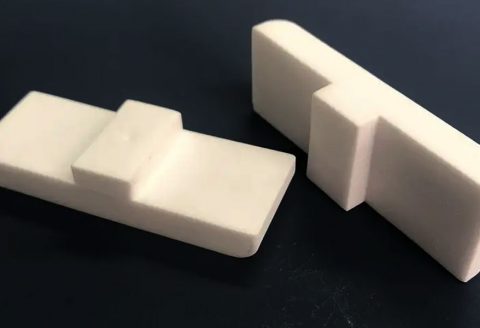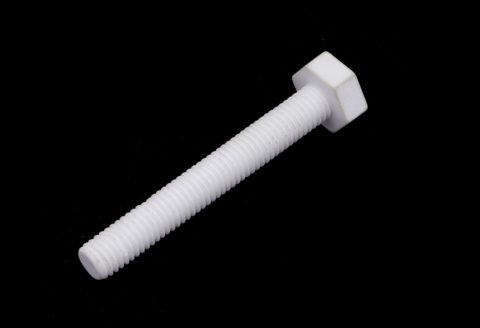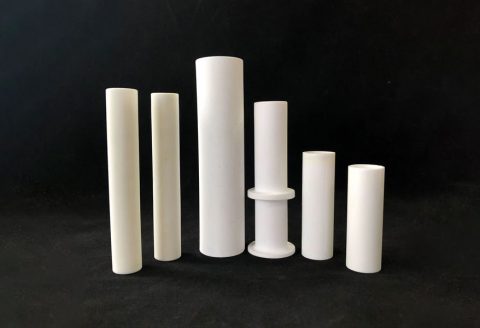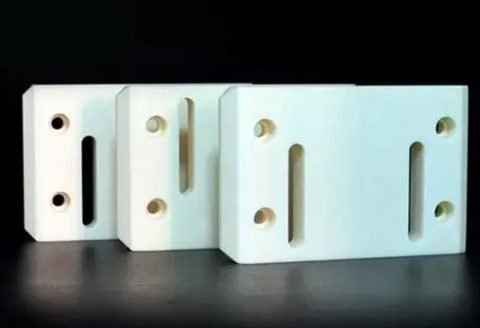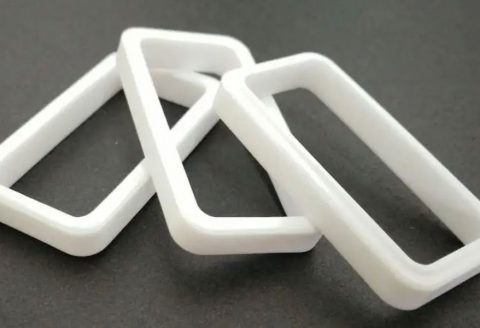Alumina Ceramic
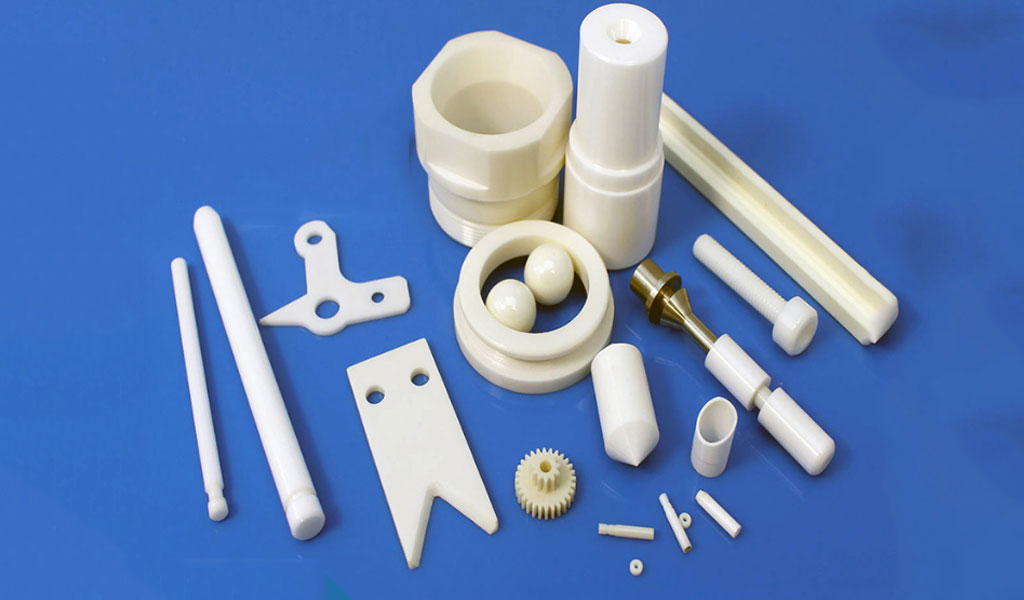
What Is Alumina Ceramic
Alumina ceramics is a ceramic material with alumina (Al2O3) as the main body, which is used in thick film integrated circuits. Alumina ceramics have good conductivity, mechanical strength and high temperature resistance. It should be noted that ultrasonic cleaning is required.Alumina ceramics are special corundum ceramics made of rare metal oxides as a flux, calcined at a high temperature of 1700 degrees, and then combined with special rubber and high-strength organic/inorganic binders. As a new type of workpiece material, alumina industrial ceramics have: high temperature resistance, high wear resistance, good toughness, high temperature insulation, impact resistance, corrosion resistance, beating resistance, good welding performance, etc., replacing traditional metal materials. to the request! It is very safe to use in high temperature corrosion, high temperature wear or high temperature corrosion lining occasions. The service life of alumina ceramics is ten to twenty times longer than that of cast stone, wear-resistant alloy cast steel, steel plastic, steel rubber and other materials.
Alumina ceramics is a kind of ceramics with a wide range of uses. Because of its superior properties, it has been widely used in modern society and meets the needs of daily use and special properties.
Alumina Ceramic CNC Machining Services – Precision CNC Machined Alumina Ceramic Parts Manufacturer
Pintejin is experienced in machining alumina ceramic material and manufacturing quality alumina ceramic parts, our alumina ceramic CNC machining services will deliver the best parts with lower cost and shorter lead time. With our state-of-the-art CNC machines and equipment, we can work with different grades of alumina ceramic and machine intricate, precise turning, drilling, and milling parts. We have 3-axis/4-axis/5-axis machining capabilities for your various purposes and needs of ceramic machined parts, enabling us to handle complex CNC machining alumina ceramic components while maintaining high precision, premium accuracy, flexibility, and consistency. We can also offer CNC milling and CNC turning for other kinds of demands in ceramic parts production. If are considering using alumina ceramic material to make your required alumina ceramic products, welcome to request an online quest or contact us to talk about more details, we’ll make our best to assist you to complete the project.
Alumina Ceramic Custom Machined Parts
High quality, carefully maintained tooling is a key to successful Alumina Ceramic machined parts. This is why Pintejin maintains a complete in-house tooling capability. Additional benefits come from the extensive selection of automated machining equipment at Pintejin (including CNC Swiss, multi-spindle and CNC milling equipment under Esprit CAD/CAM control.)
All these advantages, combined with 15+ years of expertise machining alumina ceramic, make Pintejin the company you can be confident in to come through on the delivery day. Experience the Pintejin Alumina Ceramic advantage for yourself by contacting us on your next component project.
The Classification Of Alumina Ceramic
Alumina ceramics are divided into two types: high-purity type and ordinary type.
- High-purity alumina ceramics are ceramic materials with an Al2O3 content of more than 99.9%. Because their sintering temperature is as high as 1650-1990 ° C and the transmission wavelength is 1-6 μm, they are generally made of molten glass to replace platinum crucibles; use its light transmission. It can be used as a sodium lamp tube because of its properties and corrosion resistance of alkali metals; it can be used as an integrated circuit substrate and a high-frequency insulating material in the electronics industry.
- Ordinary alumina ceramics are divided into 99 porcelain, 95 porcelain, 90 porcelain, 85 porcelain and other varieties according to the content of Al2O3. Sometimes those with Al2O3 content of 80% or 75% are also classified as ordinary alumina ceramics series. Among them, 99 alumina ceramic materials are used to make high-temperature crucibles, refractory furnace tubes and special wear-resistant materials, such as ceramic bearings, ceramic seals and water valve plates; 95 alumina ceramics are mainly used for corrosion-resistant and wear-resistant parts; 85 ceramics Because part of talc is often mixed into it, the electrical properties and mechanical strength are improved, and it can be sealed with metals such as molybdenum, niobium, and tantalum, and some are used as electric vacuum devices.
The Production Process Of Alumina Ceramic
The Powder Preparation Of Alumina Ceramics
The incoming alumina powder is prepared into powder materials according to different product requirements and different molding processes. The particle size of the powder is below 1 μm. If the high-purity alumina ceramic products are manufactured, in addition to the alumina purity of 99.99%, ultra-fine grinding and uniform particle size distribution are required.
When extrusion molding or injection molding is used, binder and plasticizer need to be introduced into the powder. Generally, the thermoplastic or resin organic binder with a weight ratio of 10-30% should be mixed with the alumina powder at a temperature of 150-200 Mixed uniformly at the bottom to facilitate the molding operation. The powder raw material formed by the hot pressing process does not need to add a binder. If semi-automatic or fully automatic dry pressing is used, the powder has special technological requirements. It is necessary to use the spray granulation method to process the powder to make it appear spherical, so as to improve the fluidity of the powder and facilitate automatic filling of the mold during molding. wall. In addition, in order to reduce the friction between the powder and the die wall, it is necessary to add 1-2% lubricant, such as stearic acid, and the binder PVA.
For dry pressing, the powder needs to be spray granulated, and polyvinyl alcohol is introduced into it as a binder. A research institute in Shanghai developed a water-soluble paraffin as a binder for Al203 spray granulation, which has good fluidity under heating. The powder after spray granulation must have good fluidity, loose density, and the flow angle friction temperature is less than 30 ℃. The particle gradation ratio is ideal and other conditions to obtain a larger green density.
The Chemical Properties Of Alumina Ceramic
- Alumina ceramic content: ≥92%
- Density: ≥3.6 g/cm3
- Rockwell hardness: ≥80 HRA
- Compressive strength: ≥850 Mpa
- Fracture toughness KIC: ≥4.8MPa m1/2
- Bending strength: ≥290MPa
- Thermal conductivity: 20W/m.K
- Thermal expansion coefficient: 7.2×10-6m/m.K
The Molding Method Of Alumina Ceramics
Forming methods of alumina ceramic products include dry pressing, grouting, extrusion, cold isostatic pressing, injection, casting, hot pressing and hot isostatic pressing. In recent years, pressure filtration molding, direct solidification injection molding, gel injection molding, centrifugal grouting and solid free molding have been developed at home and abroad in recent years. Products with different product shapes, sizes, complex shapes and precision require different molding methods.
Commonly used molding introduction:
- Dry Pressing: The dry pressing technology of alumina ceramics is limited to objects with a simple shape, an inner wall thickness of more than 1 mm, and a length-to-diameter ratio of not more than 4:1. The molding method is uniaxial or bidirectional. There are two types of presses, hydraulic and mechanical, which can be semi-automatic or fully automatic. The maximum pressure of the press is 200Mpa. The output can reach 15 to 50 pieces per minute. Due to the uniform stroke pressure of the hydraulic press, the height of the pressed parts is different when the powder filling is different. However, the pressure applied by the mechanical press varies with the amount of powder filling, which may easily lead to differences in dimensional shrinkage after sintering and affect product quality. Therefore, the uniform distribution of powder particles during dry pressing is very important for mold filling. Whether the filling amount is accurate or not has a great influence on the dimensional accuracy control of the manufactured alumina ceramic parts. Powder particles larger than 60 μm and between 60 and 200 meshes can obtain the maximum free flow effect and the best pressure molding effect.
- Grouting Method: Grouting is the earliest forming method of alumina ceramics. Due to the use of plaster molds, the cost is low and it is easy to form parts with large sizes and complex shapes. The key to grouting is the preparation of alumina slurry. Usually water is used as the flux medium, and then debonding agent and binder are added, fully ground and exhausted, and then poured into the plaster mold. Due to the adsorption of water by the capillary of the plaster mold, the slurry solidifies in the mold. When hollow grouting, when the mold wall absorbs the slurry to the required thickness, the excess slurry needs to be poured out. In order to reduce the shrinkage of the green body, a high-concentration slurry should be used as much as possible. It is also necessary to add organic additives to the alumina ceramic slurry to form an electric double layer on the surface of the slurry particles, so that the slurry can be stably suspended without precipitation. In addition, it is necessary to add binders such as vinyl alcohol, methyl cellulose, alginate amine, and dispersants such as polyacrylamine and gum arabic, all of which are aimed at making the slurry suitable for grouting operation.
The Sintering Technology Of Alumina Ceramic
The technical method of densifying a granular ceramic body and forming a solid material is called sintering. Sintering is a method of removing the voids between the particles in the body, removing a small amount of gas and impurity organic matter, and making the particles grow and combine with each other to form a new substance.
The heating device used for firing is the most widely used electric furnace. In addition to normal pressure sintering, that is, pressureless sintering, there are also hot pressing sintering and hot isostatic pressing sintering. Although continuous hot pressing sintering increases the output, the cost of equipment and molds is too high. In addition, due to the axial heating, the length of the product is limited. Hot isostatic pressing uses high temperature and high pressure gas as the pressure transmission medium, which has the advantage of uniform heating in all directions, and is very suitable for the sintering of products with complex shapes. Due to the uniform structure, the material properties are improved by 30-50% compared with cold-pressed sintering. It is 10-15% higher than general hot pressing sintering. Therefore, some high value-added alumina ceramic products or special parts for national defense and military industries, such as ceramic bearings, mirrors, nuclear fuel and gun barrels, use the hot isostatic pressing method.
In addition, microwave sintering method, arc plasma sintering method and self-propagating sintering technology are also being developed and researched.
The Finishing And Encapsulation Of Alumina Ceramics
Some alumina ceramic materials need to be finished after sintering. Products that can be used as artificial bone require a high surface finish, like a mirror surface, to increase lubricity. Due to the high hardness of the alumina ceramic material, it is necessary to use a harder grinding and polishing tile material for finishing. Such as SIC, B4C or diamond and so on. Usually, it is ground in stages from coarse to fine abrasives, and the final surface is polished. Generally, Al2O3 powder or diamond paste of <1μm can be used for grinding and polishing. In addition, laser machining and ultrasonic machining grinding and polishing methods can also be used.
Alumina Ceramic Strengthening Process
In order to strengthen alumina ceramics and significantly improve its mechanical strength, a new alumina ceramic strengthening process has been introduced abroad. The process is novel and simple. The technical means adopted is to coat a layer of silicon compound film on the surface of alumina ceramics by electron beam vacuum coating, sputtering vacuum coating or chemical vapor deposition, and heat it at 1200℃~1580℃. treatment to temper the alumina ceramic.
The mechanical strength of the reinforced alumina ceramics can be greatly increased on the original basis to obtain alumina ceramics with ultra-high strength.
The Features Of Alumina Ceramic
- High hardness: Rockwell hardness is HRA80-90, the hardness is second only to diamond, far exceeding the wear resistance of wear-resistant steel and stainless steel.
- Excellent wear resistance: the wear resistance is 266 times that of manganese steel and 171.5 times that of high-chromium cast iron. According to our customer follow-up survey for more than ten years, under the same working conditions, the service life of the equipment can be extended by at least ten times.
- Light weight: its density is 3.5g/cm3, which is only half of that of steel, which can greatly reduce the equipment load.
Alumina Ceramic Sintering Equipment In Pintejin Ceramic Machining Shop
- Studio size: 13720 length/280×2 width/450 height (including push plate)
- Push plate size: 240L/270W/40H/mm
- Material: Extra-grade jade-resistant mullite (DGM90)
- Rated power: about 210KW
- Constant temperature power: about 130KW (affected by product weight, temperature, and propulsion speed, for reference)
- Rated operating temperature in high temperature zone: 1400℃
- Temperature control points: 10 points
- Instrument temperature control accuracy: ±2°C (after steady state).
- The temperature rise of the furnace side wall surface: ≤55℃ (the center position of the outer surface of the decorative board).
- Propulsion speed: 500~1500mm/h (continuously adjustable)
- Holding time: 5h (adjusted by advancing speed, advancing speed: 980mm/h)
- Main thruster thrust: 3T
- Working power: 3-phase 4-wire, 380V
- Maximum physical size of electric kiln: about 16000L/1800W/1700H mm
The Status And Trends Of Alumina Ceramic
Analysis of the current situation
Since the reform and opening up, China’s building ceramics industry has achieved rapid development. With China’s entry into the WTO, the building ceramics industry is facing an unprecedented development opportunity and an unprecedented challenge at the same time. Chinese architectural ceramics enterprises are mainly distributed in the southeastern coastal areas, such as Foshan in Guangdong, Jinjiang in Fujian, Wenzhou in Zhejiang, Tangshan in Hebei, Zibo and Weifang in Shandong and other places. Enterprises are overly concentrated in a few areas. Although this situation has its advantages, we must not ignore its disadvantages.
- This over-concentration feature will cause serious local duplication of construction and waste of resources, which is not conducive to the comprehensive and sustainable development of China’s building ceramics industry;
- It is easy to cause vicious competition among enterprises, which is not conducive to the healthy development of China’s building ceramics industry;
- It is easy to cause the partial supply of the product to exceed the demand, and the surplus part of the product needs to be exported, especially to the distant regions (such as the northeast, northwest, etc.), and the cost of sales will undoubtedly increase;
- It is easy to cause the lack of main raw materials. These raw materials are purchased in large quantities for a long time, which will also increase the production cost.
Development Trend
As the most widely used material in advanced ceramics, alumina ceramics presents the following development trends along with the development of the entire industry:
- The level of technical equipment will be rapidly improved: The development of computer technology and digital control technology has promoted the technological progress and rapid development of the advanced ceramic material industry, such as automatic control of continuous sintering kilns, high-power and large-capacity grinding equipment, and high-performance pulverizing. Advanced complete sets of equipment such as granulation equipment and other net pressure forming equipment have beneficially promoted the improvement of the overall level of the industry, and at the same time, the production efficiency and product quality have also been significantly improved;
- The level of product quality has been continuously improved: domestic microcrystalline alumina ceramic products have grown from scratch, the industrial scale has grown from small to large, and the product quality has gone through a rapid development process;
- The scale of the industry will expand rapidly: As the basic material of other industries or fields, microcrystalline alumina ceramic products are affected and restricted by the development level of other industries. From the perspective of the application of alumina ceramics, the scope of application is getting wider and wider, and the amount of use is increasing, especially in anti-wear engineering and building ceramics production.
